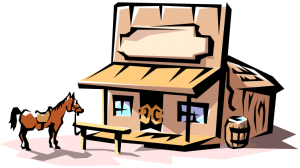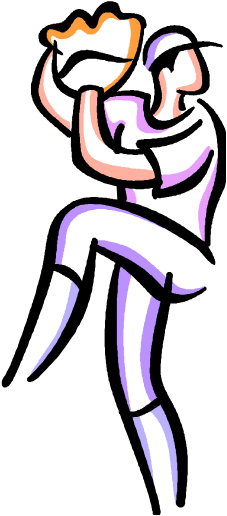 One hundred and twenty years ago the scene in the American West would have been familiar. The scorching air would have been thick and dusty. The only street through the town of rickety boarded buildings would be crowded with cowboys and their horses. The one refuge from the oppressive conditions was the local saloon. And that was where you found all manner of folks. The tired cowhands, the frontier entertainers and the bad guys would be there. Everyone knew that the bad guys always came to the saloon looking for trouble. It was not a place for the unprepared or naïve because they were easily recognized and exploited. Winning for the bad guys was dominating the saloon.
One hundred and twenty years ago the scene in the American West would have been familiar. The scorching air would have been thick and dusty. The only street through the town of rickety boarded buildings would be crowded with cowboys and their horses. The one refuge from the oppressive conditions was the local saloon. And that was where you found all manner of folks. The tired cowhands, the frontier entertainers and the bad guys would be there. Everyone knew that the bad guys always came to the saloon looking for trouble. It was not a place for the unprepared or naïve because they were easily recognized and exploited. Winning for the bad guys was dominating the saloon.
Still, there weren’t many options for places to go. It was a given that sooner or later the good guys went there too.
So you might imagine going there with a friend. Ah, your friend. The paragon of truth and justice. A cowboy that was strong and good. He represented all that right about the world and that is exactly what made him a target. Others (the bad guys) could not prosper when he was there and they knew it.
As a friend, how would you prepare him for the saloon so that he could walk out alive?
There are 5 things that you might do.
Read the rest of this entry

 We started this journey a couple of months ago. The goal has been to describe how to develop and deploy a new competitive intelligence function for your company. You might recall how the early articles tiptoed around the issues and people sensitivities to the new function. Later, I was more specific about tasks such as
We started this journey a couple of months ago. The goal has been to describe how to develop and deploy a new competitive intelligence function for your company. You might recall how the early articles tiptoed around the issues and people sensitivities to the new function. Later, I was more specific about tasks such as  I was reading my local newspaper this morning. In the sports section, there was an article extolling the positive impact that the new pitching coach had had on the professional baseball team in my area. All of the pitchers were suddenly pitching better. More strikes, longer outings and more wins seem to be rule instead of the rare exception that we had enjoyed in past years. What had made the difference, the new pitching coach was asked. Was he emphasizing new techniques or trickier pitches? Maybe he was having all of the pitchers exercise more or differently than before? Perhaps it was not only the pitchers but the also the catchers (who usually decide what kind of pitch – fastball, curve, change up – that the pitcher throws) that had improved?
I was reading my local newspaper this morning. In the sports section, there was an article extolling the positive impact that the new pitching coach had had on the professional baseball team in my area. All of the pitchers were suddenly pitching better. More strikes, longer outings and more wins seem to be rule instead of the rare exception that we had enjoyed in past years. What had made the difference, the new pitching coach was asked. Was he emphasizing new techniques or trickier pitches? Maybe he was having all of the pitchers exercise more or differently than before? Perhaps it was not only the pitchers but the also the catchers (who usually decide what kind of pitch – fastball, curve, change up – that the pitcher throws) that had improved?